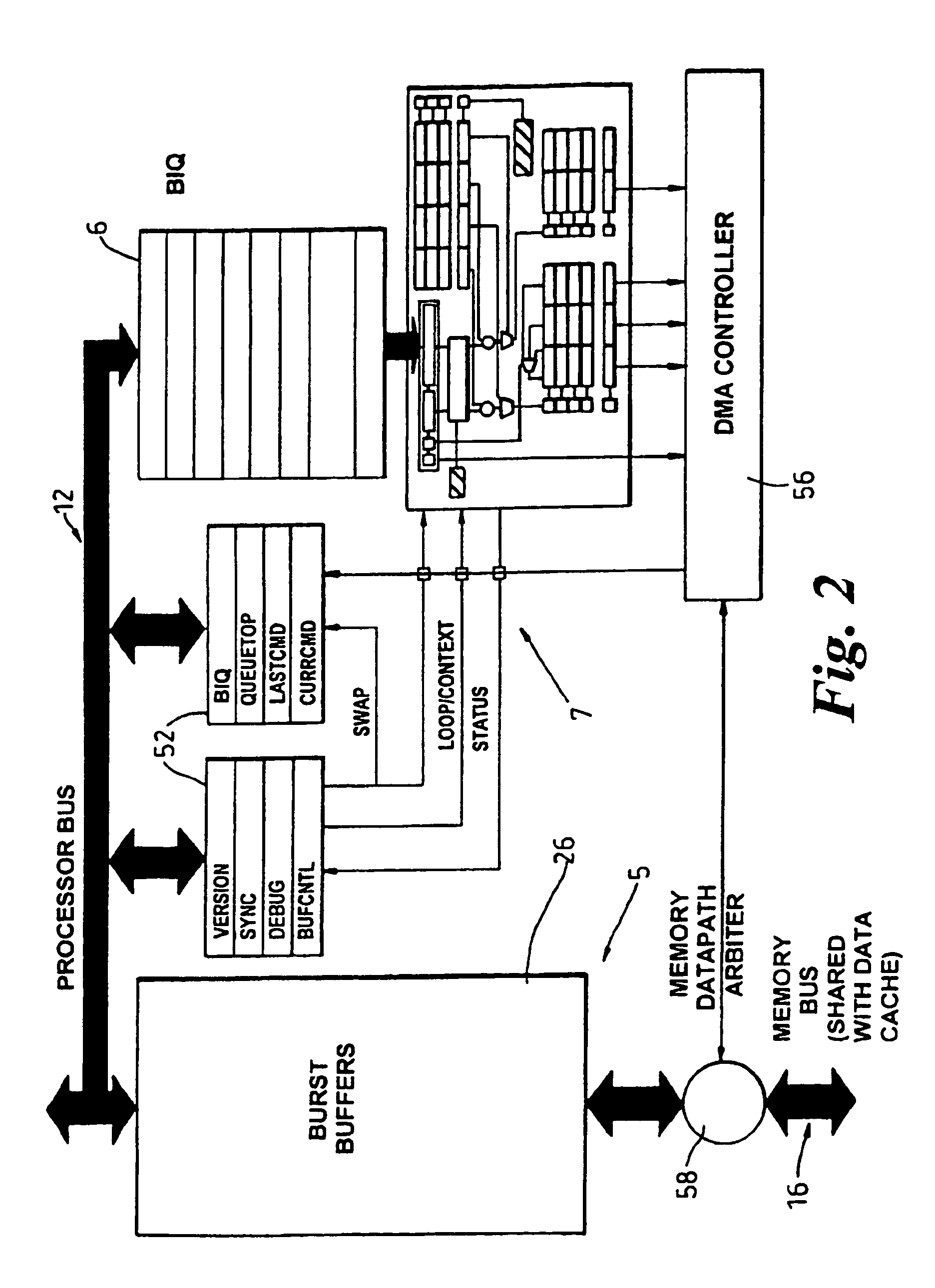Computer architecture containing processor and decoupled coprocessor
a technology of coprocessor and processor, applied in the field of computer architecture, can solve the problems of inability to optimize for all tasks, inflexible use, and cpu failures, and achieve the effect of great efficiency
- Summary
- Abstract
- Description
- Claims
- Application Information
AI Technical Summary
Benefits of technology
Problems solved by technology
Method used
Image
Examples
Embodiment Construction
[0028]FIG. 1 shows the basic elements of a system in accordance with a first embodiment of the invention. Essentially, the system comprises a processor 1 and a coprocessor 2, established so that a calculation can be partitioned between the processor 1 and the coprocessor 2 for greatest computational efficiency. The processor 1 may be essentially any general purpose processor (for example, an i960) and the coprocessor 2 essentially any coprocessor capable of handling with significantly greater effectiveness a part of the calculation. In the specific system described here, essentially the whole computation is to be handled by the coprocessor 2, rather than by the processor 1—however, the invention is not limited to this specific arrangement.
[0029]In the system specifically described, coprocessor 2 is a form of reconfigurable FPGA, as will be discussed further below—however, other forms of coprocessor 2, such as, for example, ASICS and DSPs, could be employed instead (with correspondin...
PUM
 Login to View More
Login to View More Abstract
Description
Claims
Application Information
 Login to View More
Login to View More - R&D
- Intellectual Property
- Life Sciences
- Materials
- Tech Scout
- Unparalleled Data Quality
- Higher Quality Content
- 60% Fewer Hallucinations
Browse by: Latest US Patents, China's latest patents, Technical Efficacy Thesaurus, Application Domain, Technology Topic, Popular Technical Reports.
© 2025 PatSnap. All rights reserved.Legal|Privacy policy|Modern Slavery Act Transparency Statement|Sitemap|About US| Contact US: help@patsnap.com



